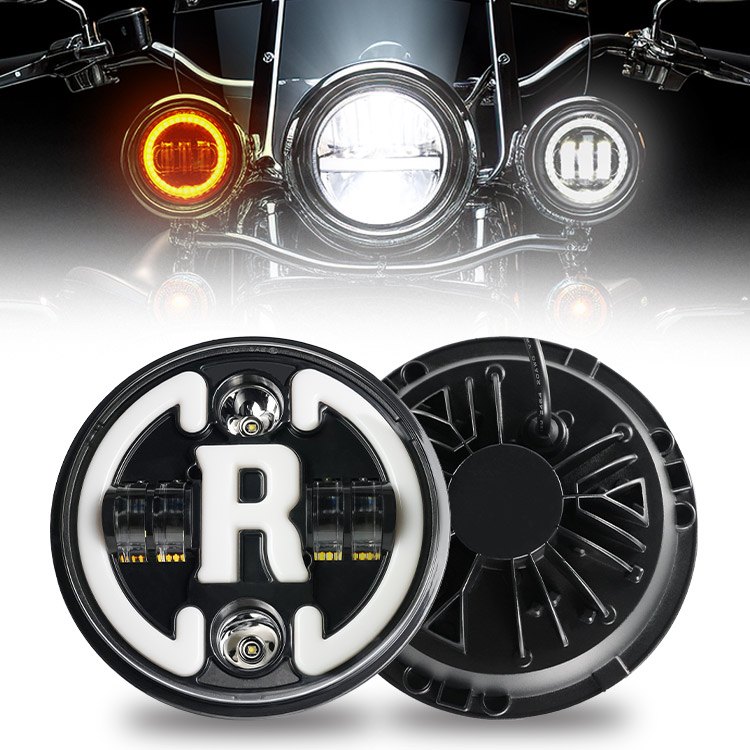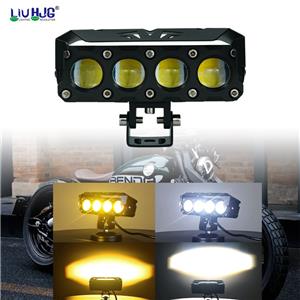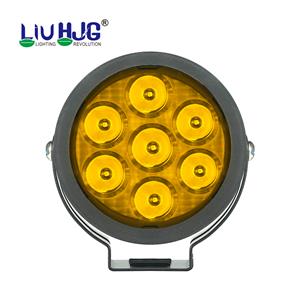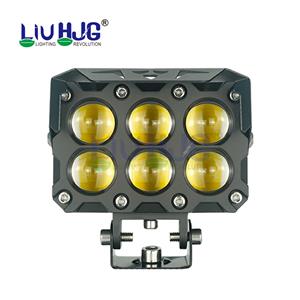Why are Motorcycle Lights Important?
LiuHJG
For the layperson, a motorcycle might just be a combination of metal, rubber, and engine noise. But for the rider, it is an extension of the body, a tool for freedom, and a weighty responsibility on every journey. In the symbiotic relationship between human, machine, and the open road, one component stands out not for its power or speed, but for its fundamental role in protecting life: Motorcycle Lighting.
While its discussion is often overshadowed by engine displacement or suspension upgrades, the lighting system is the motorcycle's primary language. It is how this machine communicates its presence, intentions, and warnings to a world filled with larger, often inattentive vehicles. The importance of Motorcycle Lighting transcends mere illumination; it is a complex interplay of active safety, passive safety, and technological progress. For the serious rider, neglecting it is unacceptable.

I. The Relentless Reality: Data and the Visibility Crisis
Current motorcycle safety data gives pause for thought. According to the National Highway Traffic Safety Administration (NHTSA) and similar agencies globally, motorcyclists are significantly over represented in traffic fatalities. A recurring critical factor in multi-vehicle collisions is other drivers failing to "see" the motorcycle. This phenomenon, often termed "Looked But Failed To See" (LBFTS), highlights a fundamental crisis of Visibility.
Amid the visual clutter of dense traffic—among towering SUV, dazzling billboards, and smartphone-distracted drivers—a single, small motorcycle can easily blend into the background. Its narrow profile makes judging its speed and distance difficult. This is where a high-quality, strategically designed Lighting system becomes the rider's most powerful ally. It's not just about being seen; it's about being impossible to ignore a midst the dangers and safety of the road.
A dim, outdated, or faulty headlight turns the rider into a ghost on the road. Conversely, the bright, well-focused beam of a modern LED Headlight can cut through the visual noise, creating a larger, clearer signal for the vehicle. It allows the rider to be identified earlier and from a greater distance, providing other drivers with precious seconds to process the information and react appropriately. This directly translates to collision avoidance and lives saved.
II. The Multifaceted Role of Motorcycle Lighting: Beyond Seeing the Road
A motorcycle's lighting kit is a sophisticated set of communication tools. Each component has a unique and vital purpose:
The Headlight: Your Primary Beacon
The headlight is the workhorse of the Motorcycle Lighting ecosystem. Its role is dual-purpose:
Illumination (Active Safety): It lights up the road ahead, revealing potholes, debris, animals, and changes in road surface in advance, providing the rider with crucial reaction time. Modern options like LED Headlights and Adaptive Front-lighting Systems (AFS) have revolutionized this. LED technology provides a whiter, brighter light, closer to daylight, reducing eye strain for the rider and significantly improving the contrast and definition of objects on the road. AFS systems, often found on high-end Motorcycles, pivot the headlight beam slightly into the direction of a turn, illuminating the apex of a corner—truly lighting the way, not just the straight road ahead, while also reducing glare for oncoming traffic.
Conspicuous (Passive Safety): During the day, the headlight's role shifts entirely to making the motorcycle conspicuous. Daytime Running Lights (DRL), standard on most new Motorcycles, are designed specifically for this. They are not meant to illuminate the road but to create a unique, high-intensity signal that grabs attention, distinguishing the motorcycle from its surroundings and drastically reducing the likelihood of front-end collisions.
Tail Lights, Brake Lights, and Turn Signals: Communicating Intent
If the headlight says, "I am here," the rear lights articulate, "...and this is what I am doing."
Tail Light: This red light is constantly illuminated when the headlights are active, marking the motorcycle's rear boundary.
Brake Light: Perhaps the most critical communication tool. It signals the urgent warning: "I am slowing down or stopping immediately!" The effectiveness of the brake light is paramount. Modulation technology (a quick pulse upon initial braking to attract attention) and instantly illuminating LED arrays (much faster than incandescent bulbs) provide the earliest possible warning to following drivers.
Turn Signals: These amber lights eliminate guesswork. They clearly signal the rider's intent to change lanes or turn, allowing other traffic participants to adjust their speed and position. Self-defence signals and increasingly popular, brighter LED alternatives enhance both safety and convenience.
Auxiliary Lights:The Ultimate Safety Upgrade
For riders who frequently travel at night, on poorly lit roads, or in inclement weather, auxiliary lights are not a luxury; they are an essential safety upgrade. These additional lights, mounted on crash bars or fairings, serve two primary functions:
Supplement the Headlight: They can be set to provide a wider beam pattern, illuminating the roadside ditches for animals or road signs, or a long-distance spotlight for seeing farther down the highway.
Enhance conspicuous : A pair of widely spaced, bright lights creates a larger triangular light pattern from the front, making the motorcycle appear larger and more car-like from a distance, helping drivers accurately judge its presence and distance.
III. The Technological Revolution: From Halogen to LED and Beyond
The evolution of Motorcycle Lighting technology is a story of relentless pursuit for better performance and efficiency.
Halogen: The old standard,Inexpensive but inefficient, producing a warm yellow light and significant heat.
HID (Xenon): Brighter and whiter than halogen, but slower to reach full brightness, complex, and can cause glare if not properly installed.
LED (Light-Emitting Diode): The current gold standard. LED Headlights offer superior brightness, instant-on capability, significantly lower power consumption, extremely long service life, and rugged durability. Their compact size also allows designers to create unique and sleek signature looks for modern Motorcycles.
The Future - Adaptive & Intelligent Lighting: The next frontier is already here. Systems that use cameras and sensors to automatically switch between high and low beams for oncoming traffic (Automatic High Beam), cornering lights that activate based on lean angle, and even projection systems that cast warnings or symbols onto the road are moving from mid-to-high-range models into the mainstream.
Conclusion: A Self-Investment You Cannot Afford to Neglect
Treating Motorcycle Lighting as just another component is a dangerous oversight. It is a critical active and passive safety system and a rapidly advancing field of technology. For the rider, investing in the best possible Lighting—whether by choosing a modern motorcycle equipped with an LED Headlight or adding high-quality auxiliary lights—is one of the most effective measures to mitigate risk on the road.
It is an investment in being seen, in seeing more clearly, and ultimately, in returning home safely after every ride. It is a commitment to one's own safety and that of others. In the high-stakes environment of motorcycling, Light is not just about Visibility. Light is life.




